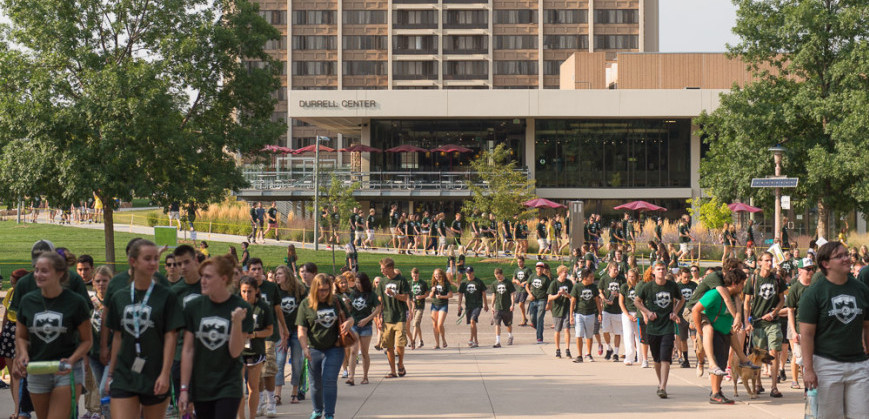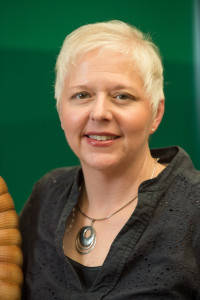
What a difference a year makes.
Melissa Trifiletti became Colorado State University’s admissions director in March 2014 with a clearly defined goal: Bring the largest freshman class in CSU history to campus in 2015. That meant surpassing the previous record of 4,544 first-year students set in 2012.
“In a single recruitment year, we knew it was going to be a stretch,” she said.
Although final numbers won’t be available until after the official census on Sept. 9, Trifiletti is confident that her department has made, if not surpassed, that goal.
“We’re estimating that we will see about 250 more first-year students than last year,” she said. “I’m really proud that we are seeing more students from Colorado, including transfers, choosing CSU this year as well.”
In fact, it was a downward trend in the number of in-state applications that started not only the Admissions team but also the entire administration rethinking the way we had been inviting high school students to become members of the Ram Family.
Trifiletti worked with Provost and Executive Vice President Rick Miranda; Vice President for Enrollment and Access Robin Brown; Lynn Johnson, now Vice President for Operations; Vice President for External Relations Tom Milligan; Assistant Vice President for Enrollment and Access Leslie Taylor; and Tom Biedscheid, director of Student Financial Services, among others, to review current practices and remove any barriers to prospective students enrolling at CSU.
“The process culminated at the President’s Forum last fall,” Trifiletti said. “We finalized the details in the eleventh hour so we could quickly announce the news for the 2015 recruiting season.”
Everything under review

The review included everything from looking at the day-to-day work flow of the 62 employees in Admissions to asking high school guidance counselors across the state how CSU could better meet their needs – and their students’ expectations.
“At every level, we asked the questions, ‘Does it make sense to do it this way?’ and ‘Can we do it better?’ so we could identify and eliminate any procedures that were not helpful to prospective students,” Trifiletti said.
The results were far-reaching, both internally and externally. Admissions advisors now contact high school counselors through workshops and arrange campus visits for small schools as well as large ones. Newly aligned work functions allow everyone to collaborate more effectively. Updated data systems permit more efficient interactions, both internally and with prospective and admitted students. The Find Your State marketing campaign set a new tone for all print, web, social media and email communications, one that Trifiletti said has very much resonated with students on every level to increase engagement. Even traditional decision deadlines came under scrutiny.
“We couldn’t find any good reason, given our current data management capabilities, why students would have to wait to find out if they had been accepted to CSU,” Trifiletti said. “Now we make admit decisions within 7 to 10 days of when we receive a completed application. That means we rendered 8,700 decisions before Dec. 19, the traditional day all the letters would go out, so students knew how to plan over their winter break.”
One of the most important changes was creating a stronger relationship between Admissions and Student Financial Services. In the past, the admissions counselors who had worked with prospective students for months had little involvement in scholarship awards. Now the two departments engage differently, Trifiletti said.
“Not only have we expanded eligibility for scholarships for students from Colorado and other western states, but we also take a closer look at students who may be very close to qualifying,” she explained. “We are more proactive, calling the student to let them know the situation and then submitting a request for an exception, rather than wait for them to do it. We now work as an advocate on their behalf with student financial services.”
In the end, according to Trifiletti, it takes an entire campus to create a positive educational experience and student engagement that lasts a lifetime.
“CSU is a wonderful place to work,” she said. “Whenever we asked for support in making changes, everyone on campus was willing to help – faculty, staff, student organizations, administration. And that’s the same feedback we get from parents and students and everyone who visits: CSU is an extremely friendly campus, and we appreciate that.”